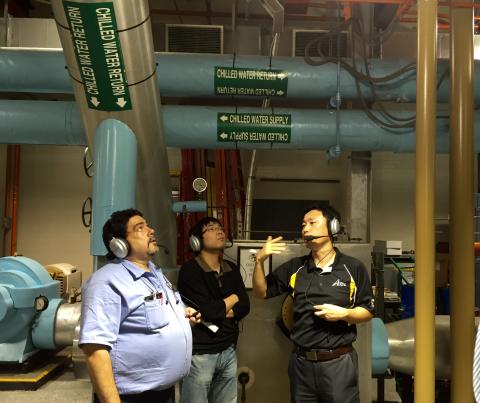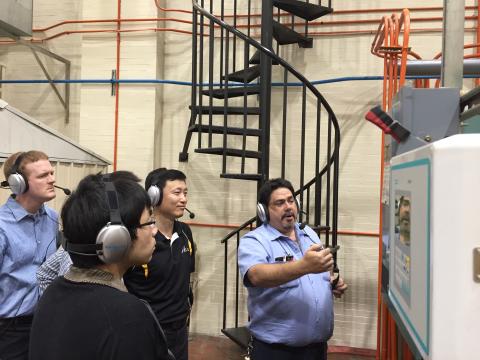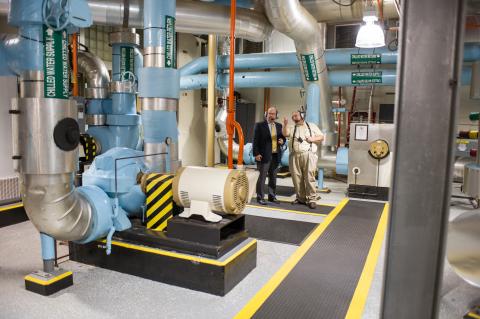Georgia Tech’s campus is home to many research laboratories, but how often is Tech itself the subject of research?
Georgia Tech’s campus is home to many research laboratories, but how often is Tech itself the subject?
The Smart Energy Campus Program uses Georgia Tech as a living laboratory and collects data from energy utility systems all over campus. Through collaboration among multiple campus departments, insights from this project will directly impact energy planning and consumption on campus in many ways, with the hope of making Tech’s energy utility systems more efficient.
Smart Energy Campus is a joint sustainability research initiative with the School of Electrical and Computer Engineering, the Aerospace Systems Design Laboratory (ASDL), and Georgia Tech Facilities Management. Beginning in 2013, the idea behind this project was to see if Georgia Tech researchers could be of use to Facilities by utilizing data analysis as well as modeling and simulation tools to evaluate and optimize different energy systems on Tech’s campus.
“It is extremely exciting to know that our team is supporting some of the most brilliant complex-system designers in the world,” said Mark Demyanek, assistant vice president of Operations and Maintenance within Facilities Management. “Using our built environment as a living laboratory is a concept that is growing in higher ed, and I believe we at Georgia Tech are leading that growth in a thoughtful and responsible way.”
Already, the Smart Energy Campus Program has created software for the Facilities Management Energy Conservation team to use when analyzing utility consumption trends and identifying potential energy efficiency projects. This project is designed to save labor hours, resources, and money by quickly identifying buildings that have unusually high energy usage, and then notifying teams to remedy the problem.
“The Smart Energy Campus Program is trying to take advantage of new modeling tools and large amounts of data to gain deeper insight and predict what can happen in terms of energy utilization on campus,” said Scott Duncan, research engineer in the ASDL.
The Facilities Management team consists of five people who meet with the research team several times per month. The research members on the team have included graduate students, research engineers, and postdoctoral fellows, all of whom serve as another set of eyes to interpret the data and help Facilities see problems in different ways.
“This program is revolutionary in getting access to data,” said Duncan. “If we were doing this program for a community outside of campus, it would be difficult to get access to this much data.”
With so much data, the project continues to grow and the mission evolves. Building a predictive model of campus energy is no easy feat.
“We keep finding things to do and smaller side projects to work on,” said Duncan. Through thermal network and electric grid modeling of campus, researchers will have greater agility and insight to see where energy is not being used efficiently, as well as analyze the effects of energy system technology upgrades.
Through the research effort, areas of improvement will be more visible and enable Facilities to channel resources toward areas of need. The ultimate vision of the research team is a “smart” system that will identify and react to problems and inefficiencies on its own, potentially without human assistance.
“With any luck, one day soon, campuses across the world can use these tools to manage their facilities resources more efficiently,” said Demyanek.
Additional Images


